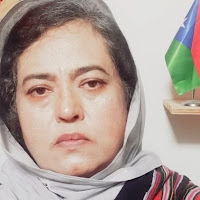Raju Korti
Watching the war clouds gather
once again over the Indo-Pakistan border, my attention is fixed not just on
Kashmir, but also westward -- on Balochistan. The overlooked fault line in
Pakistan’s fragile unity may well emerge as the X-factor in the subcontinent’s
latest chapter of hostility.
Balochistan -- Pakistan’s largest and most restive province -- is not new to insurgency. But this time, something feels different. From the recent dramatic arrest of human rights activist Mahrang Baloch, to the chilling train hijack that exposed the insurgents’ operational depth, it’s clear that the Balochistan Liberation Army (BLA) is no longer a rag-tag tribal militia. It is an evolved, coordinated, and media-savvy insurgency, increasingly drawing educated youth who are done waiting for justice from Islamabad.
The Pakistani state’s decades-old playbook -- dismissing Baloch anger as tribal posturing -- is no longer convincing. The grievances are rooted in brutal facts: economic plunder, political disempowerment, and forced annexation in 1948. While the gold, gas, and copper from Baloch soil fuel Pakistan’s economy and China’s ambitions via CPEC, the locals remain in penury. The BLA has declared this exploitation as war -- and they are responding in kind.
 |
| Naela Qadri (file grab) |
India, of course, has historically refrained from overt involvement in Balochistan. Geography doesn’t favour it -- there’s no contiguity, no corridor. Yet, India’s moral and diplomatic support -- especially in international forums -- is not without precedent. In 2016, Prime Minister Modi’s Independence Day remarks gave voice to Balochistan’s struggle. However, India’s challenge lies in translating sentiment into strategic leverage without triggering a full-scale regional conflagration.
Then there’s the other wildcard: the Taliban. Pakistan's Frankenstein has turned rogue. Post-US withdrawal, the Taliban not only refuses to police the Tehrik-e-Taliban Pakistan (TTP) -- its ideological cousins -- but has also rejected the legitimacy of the Durand Line (the international border between Afghanistan and Pakistan). For Pakistan, this is more than a diplomatic slight. It is a security nightmare. Reports of co-ordination between the TTP and BLA suggest a budding convergence -- a de facto pincer movement from the west.
Pakistan’s military, always focused eastward, now finds itself encircled. It is impossible to ignore that a two-front crisis is no longer hypothetical. The Taliban and the BLA may not be allies in the conventional sense, but both benefit from keeping Pakistan destabilized. And if India-Pakistan tensions escalate into conflict, Baloch separatists may well see it as the perfect storm to press for an independent homeland.
Could Balochistan seize this moment and tilt the balance? Possibly -- but not without international recognition, safe sanctuaries, and sustained pressure on Islamabad. Whether or not India is prepared to play that hand is a matter of both geopolitical calculation and moral conviction.
What is undeniable is this: Pakistan is a state under siege -- not by India, but by the ghosts it helped raise and the voices it tried to silence. In the next war, Balochistan may not just be collateral -- it may be the catalyst.




No comments:
Post a Comment